It all started so innocently. One minute, my now-fiancé, Paul, was on one knee, presenting a ring so sparkly it could be seen from space. A whirlwind of champagne, happy tears, and approximately 4,000 ring selfies. We were sitting on the sofa, basking in that warm, fuzzy, “just engaged” glow. “So, what kind of wedding do you want?” he asked.“Oh, I don’t know,” I said, breezily. “Something simple. Maybe… a vintage wedding?” Paul, bless his practical heart, nodded. “Vintage. Sounds nice.”
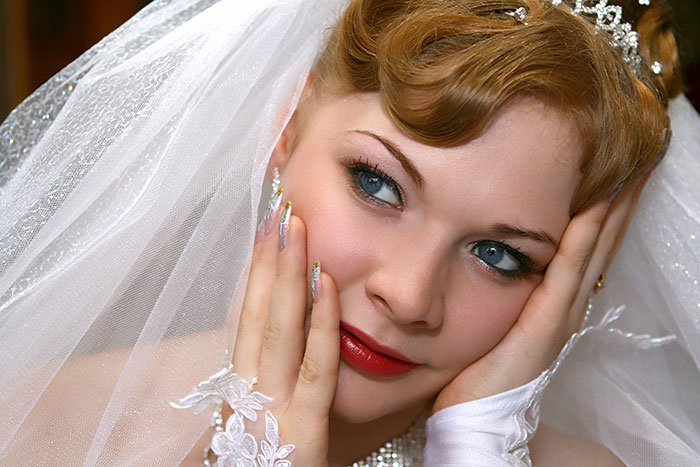
Nice. He said it sounded nice. Little did he know, I had just uttered the two words that would detonate my sanity. “Vintage,” it turns out, is not a theme. It’s a Pandora’s box of decades. A time-traveling wormhole filled with flappers, victory rolls, and a truly alarming amount of tulle. My single, innocent Pinterest board, “Cute Vintage Wedding,” has since morphed into a sprawling, color-coded digital conspiracy map. Paul just thinks I’m looking at flowers. He has no idea I’ve become a slightly unhinged historian of nuptials.
Bookmarking AW Bridal for future reference, I began my deep dive into vintage wedding history.
Flappers and Feathers – Roaring Twenties
My first stop was the Jazz Age, and let me tell you, it was a party. I was immediately seduced by the sheer, unapologetic glamour of it all. This was the era of the flapper bride. She was a creature of rebellion.

The Dress: A Column of Dazzle
The dresses of the 1920s were a radical departure from the corseted confections of the past. The silhouette was a straight, tubular shape. It dropped the waistline down to the hips, often achieved with a simple silk slip dress. This was covered by a breathtakingly intricate beaded tunic. These weren’t just dresses; they were works of art.
1920s wedding dresses dripped with beading, pearls, white crystals, and delicate Chantilly lace. The hemlines, which had been creeping up all decade, hit their scandalous peak around 1926. Brazenly showing off the bride’s ankles. As I scrolled through old photos, I saw dresses with scalloped edges, handkerchief hems and even some trimmed with white fur for winter weddings. Just look at the beautiful lace bridal dresses at AW Bridal for inspiration!
Then I discovered the alternative: the Robe de Style. This gown featured a fitted, sleeveless top. But it exploded into a full, wide skirt, sometimes held out with panniers or layers of petticoats. I spent a solid hour weighing the pros and cons. Do I want to look like a dazzling, walking chandelier (flapper style) or a delicate, tiered lampshade (Robe de Style)? The decisions were already becoming overwhelming.
The Bridesmaids: My Jazz Age Girl Gang

The bridesmaids, thankfully, got to join in on the fun. Their dresses mirrored the bride’s party-ready aesthetic. I pictured my friends, my very own girl gang, decked out in beaded, fringed frocks in the rich jewel tones that were popular for winter weddings. Deep blue, rose red, chartreuse green, or turquoise. Modern reproductions are everywhere, with names like the “Sybil Blush Fringe Dress” or the “Mary Art Deco Fringe Dress.” My vintage wedding might look like a scene straight out of The Great Gatsby. The idea of them doing a synchronized shimmy down the aisle was almost too good to resist.
The Hair and Makeup: The Crowning Glory
Of course, a 1920s look is nothing without the hair. The iconic bob was the foundation, but the real magic was in the styling. I fell head over heels for finger waves, those sleek, S-shaped waves sculpted flat against the head. I watched tutorials of stylists. Painstakingly combing wet, product-laden hair into place with duckbill clips before setting it under a hooded dryer. It looked less like hairstyling and more like a delicate form of engineering.
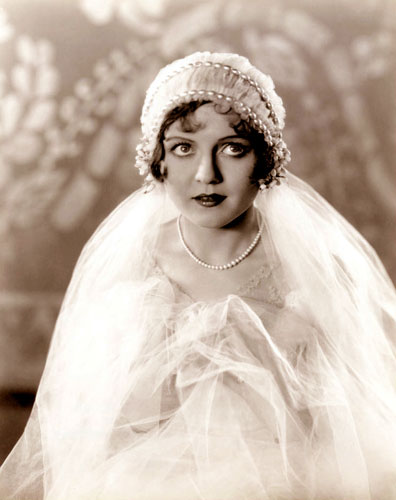
The headwear was a universe unto itself. There was the Juliet cap veil, a cloche-style cap intricately adorned with lace and beads from which the veil flowed. Or the simpler, yet equally dramatic, wreath of flowers or gemstones worn like a headband over a single, floor-sweeping layer of silk tulle. The rule of thumb was deliciously dramatic: the shorter the dress, the longer the veil. To complete the look, makeup was bold and “painted,” a far cry from today’s natural aesthetic.
The Vibe: An Art Deco Dream
A 1920s wedding isn’t just a wedding; it’s a full-blown spectacle. The decor is pure Art Deco opulence. I envisioned a classic black, white, and gold color palette. With geometric patterns on everything from the invitations to the linens. The tables would be adorned with mirrored charger plates and magnificent centerpieces of white ostrich feathers and pearls. A champagne tower would be absolutely non-negotiable, and a live jazz band would be essential to keep the party roaring. It would be a party Jay Gatsby himself might throw. I started to wonder if my budget could handle that level of “old sport” extravagance.
As I delved deeper, I realized the 1920s aesthetic was more than just a look; it was a cultural statement. The move away from restrictive corsets to the free-moving tubular dress. This was a physical manifestation of women’s newfound social and economic freedoms after World War I. The rising hemlines, the short hair, the bold makeup? It all signaled a break from the demure traditions of the past. A 1920s vintage wedding wasn’t a stuffy, formal handover of property; it was a stylish, self-expressive, and thoroughly modern celebration.
Hollywood Dreams and Depression Realities – The 1930s
Leaving the frenetic energy of the Jazz Age behind, my research journey took me into the 1930s. The mood shifted instantly. The frantic, beaded shimmy of the flapper was replaced by the slinky, smoldering glide of the Old Hollywood movie star. This was an era of pure, unadulterated elegance.
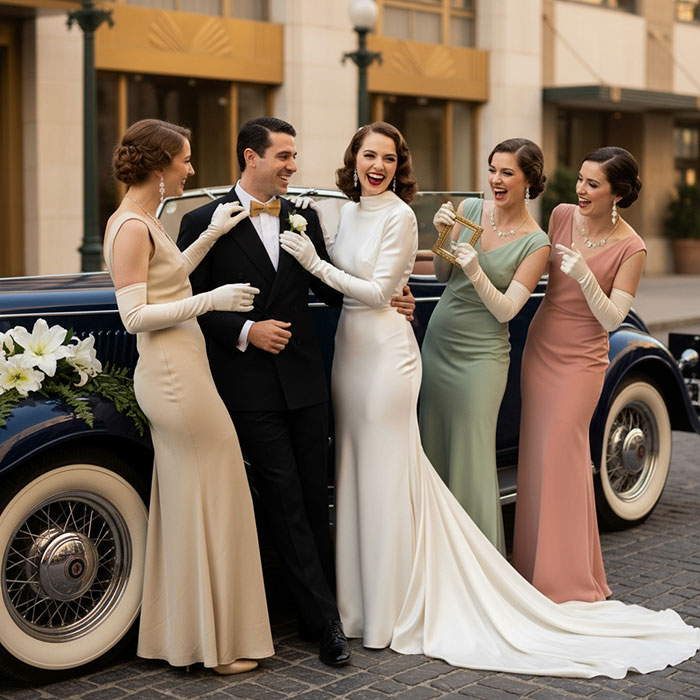
The Dress: The Bias-Cut Bombshell
The drop-waist silhouette vanished completely, replaced by gowns with long, sweeping lines. Now celebrating the natural curves of the female body. The undisputed star of the decade was the bias-cut dress. This technique, which involves cutting the fabric at a 45-degree angle to the grain. It creates a fluid drape that clings and skims in the most divine way. I swooned over images of sleek gowns made from shimmering, liquid-like fabrics such as silk, satin, and rayon.
The Hollywood influence was everywhere. Gowns featured daringly low backs, high necklines, and long, elegant sleeves. Trains became dramatic, cathedral-length affairs that seemed to pool on the floor like liquid moonlight. As I gazed at these goddesses of the silver screen, I had to ask myself a serious question. Do I possess the requisite posture and smoldering gaze to pull off a dress that leaves absolutely nothing to the imagination? It seemed to require a level of inherent glamour that I may not possess. I’m a woman who considers finding matching socks a major life achievement.
The Bridesmaids: A Chorus of Elegance
The bridesmaids were an extension of this streamlined sophistication. They would be clad in similarly sleek, floor-length gowns, perhaps in soft pastels or rich jewel tones. The essential accessories were over-the-elbow silk gloves and sparkling paste jewelry, completing a look of coordinated, understated glamour. Flower girls were an additional touch of grace, still popular today.
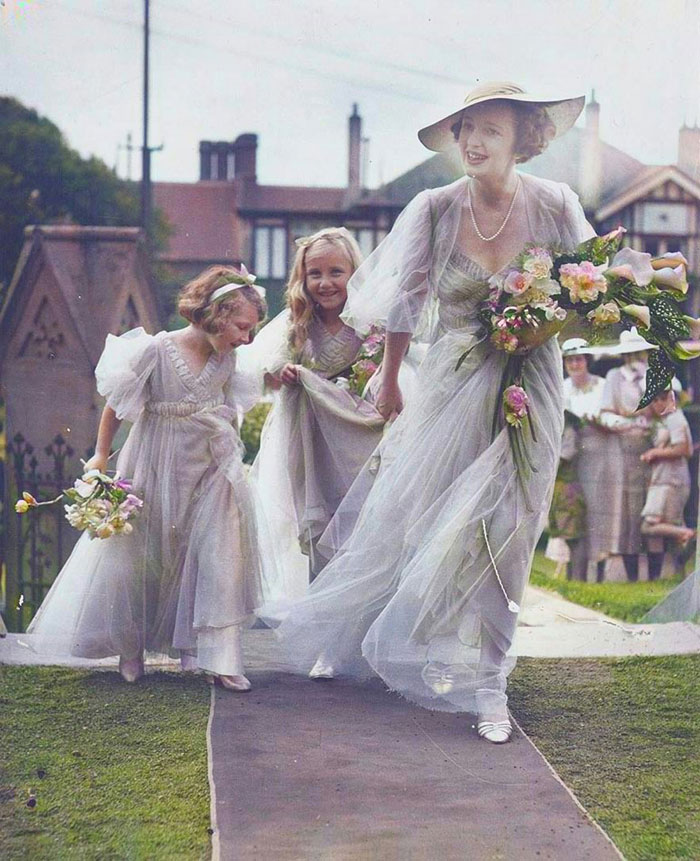
The Hair and Makeup: Soft and Sculpted
The severe bob of the ’20s softened into longer, more romantic styles. I learned about the Marcel wave, a heat-styled wave that created a softer look than its predecessor, the finger wave. Pin curls were used to create beautiful, textured updos. Some brides opted for a Grecian look with intricately braided crowns. Makeup was still glamorous but had lost the “painted” quality of the ’20s, favoring a more refined, sculpted look.
The Vibe: Romantic Art Deco
The Art Deco theme of the ’20s dialed down the “roaring party” and turned up the “exclusive supper club.” The aggressive black and gold was softened. Now a romantic palette of champagne, ivory, and soft greens, with glittering gold accents. Tablescapes were the picture of opulence. Mirrored charger plates, vintage china, golden candlesticks, and towering floral arrangements of ivory blooms like Casablanca lilies and ferns.
This decade presented a fascinating contradiction. All this cinematic glamour and escapist fantasy was flourishing against the backdrop of the Great Depression. While the aspirational vintage wedding was pure Hollywood opulence, the reality for most was quite different. Many brides couldn’t afford a new, dedicated wedding gown. Instead, they wore their “Sunday Best” or chose a simple dress that could be dyed a different color and worn again after the wedding. A practical choice in a time of widespread hardship. This duality makes a 1930s theme a playground of interpretation.
1940s Victory Rolls and Parachute Silk
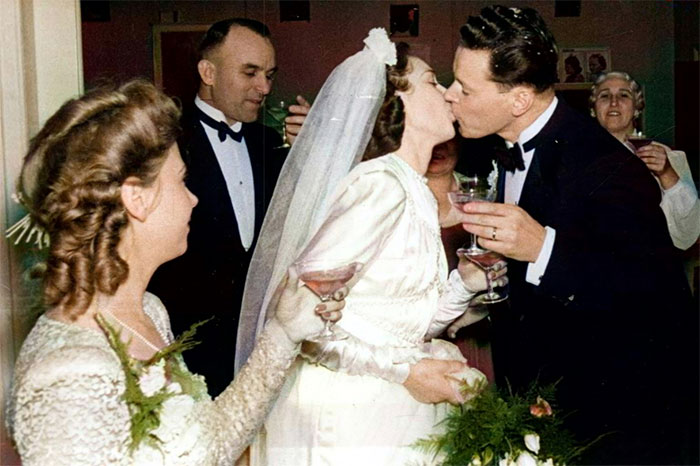
My time-traveling research took a sharp, sobering turn as I entered the 1940s. The smoldering glamour of the ’30s was abruptly extinguished by the realities of World War II. Fabric rationing and the all-encompassing war effort changed everything, and the wedding industry was no exception. This was the era of “Make Do and Mend.” I was struck by the incredible ingenuity and heart of wartime brides.
The Dress: Practicality and Patriotism
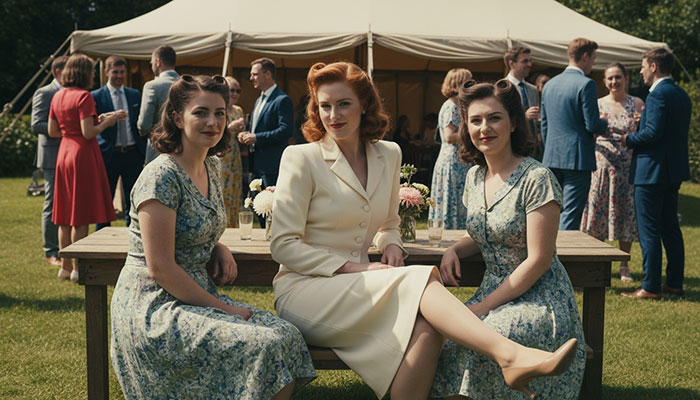
Silk and nylon were requisitioned for the war effort (primarily for making parachutes). Traditional wedding gowns became a luxury few could afford. Brides had to get creative. A popular and incredibly chic option was a smart two-piece white suit. Featuring the era’s signature strong, padded shoulders and a nipped-in waist. This is a look immortalized by Lauren Bacall at her wedding to Humphrey Bogart. Other brides simply wore their best day dress . Others participated in a beautiful tradition of a single wedding dress being borrowed and worn by multiple women in a community.
But the most romantic and resourceful story of all was that of the parachute silk dress. Servicemen would send home damaged or decommissioned nylon or silk parachutes. Their fiancées would painstakingly transform the material into stunning, often surprisingly frilly, wedding gowns. It was a beautiful symbol of love and patriotism, a way to create something beautiful out of the machinery of war.
Of course, after the war, fashion exploded back onto the scene. Christian Dior’s revolutionary “New Look” in 1947, brought rounded shoulders, tight waists, and full, swirling skirts. It was a joyful rejection of wartime austerity and a direct precursor to the styles of the 1950s.
The Bridesmaids: A Collective Effort
Bridesmaids during the war would have followed the same practical ethos. They would wear their own best dresses or simple frocks handmade from whatever fabric was available. The focus was on being present and celebrating, not on perfectly coordinated, brand-new outfits.
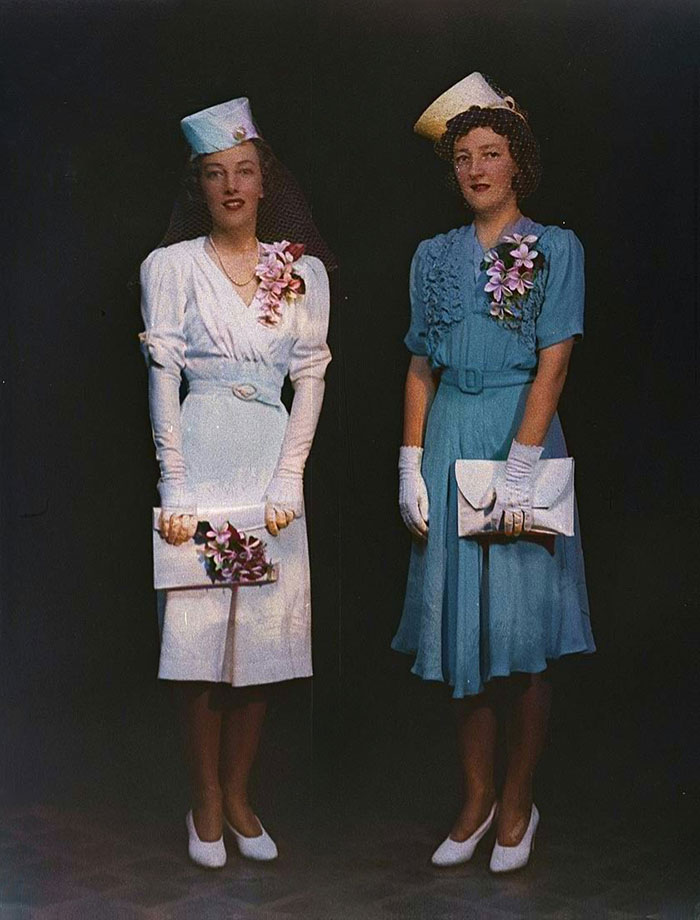
The Hair and Makeup: A Symbol of Victory
If there is one defining look of the 1940s, it’s the Victory Roll. This iconic hairstyle featured voluminous rolls of hair pinned on top. Or to the sides of the head, creating a distinctive silhouette. The style’s name is believed to have multiple patriotic origins. It was linked to the “V for Victory” campaign. The shape of the rolls was said to mimic the aerobatic maneuvers performed by fighter planes in celebration of a victory. It was a way for women on the home front to show their support. Also to keep their hair neatly and safely out of the way while working in factories.
The Vibe: A Heartfelt Gathering
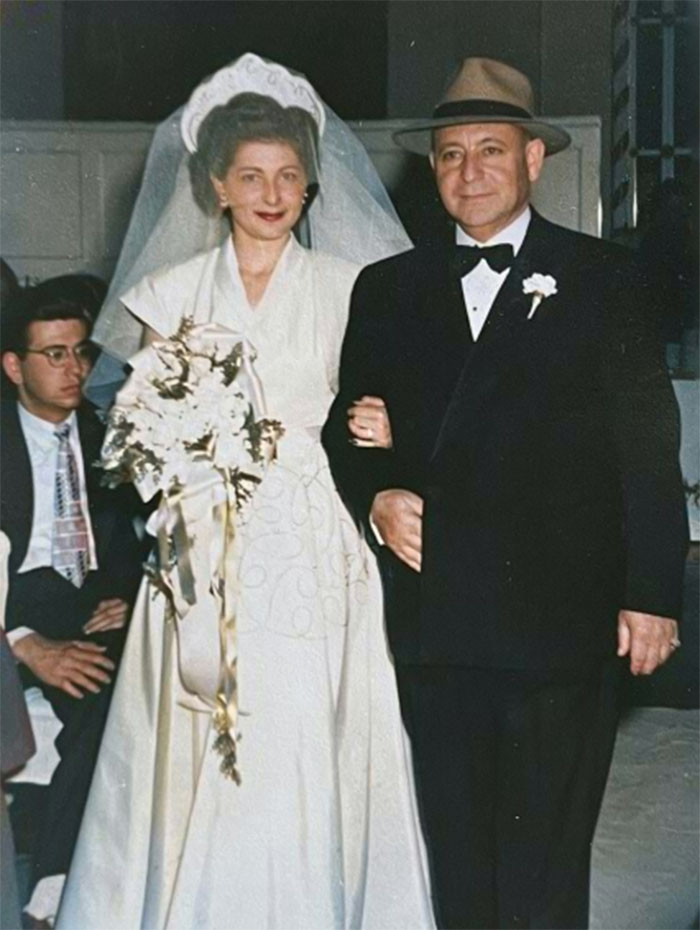
A wartime vintage wedding was often a hastily arranged affair, planned to coincide with a groom’s precious few days of leave. As a result, the celebrations were less about lavish decor and more about the heartfelt gathering of the community. The “Make Do and Mend” philosophy extended to every aspect of the day. Decorations were simple and sourced from what was available. Easily grown garden flowers like carnations and chrysanthemums, with simple ribbons lining the aisle.
The sense of community was the true centerpiece. Families would pool their precious food and clothing coupons. Enough to ensure the bride had a trousseau and the guests had a festive meal. In a testament to ration-book creativity, the grand wedding cake in many photographs was actually a “fake.” It was a cardboard or wooden structure concealing a much smaller, real cake inside for the couple to share. It became clear to me that the 1940s wedding wasn’t about material abundance at all.
Tulle, Tea-Length, and Twirling – 1950s
After the austerity and emotional weight of the 1940s, my journey into the 1950s felt like a burst of sunshine. The war was over, prosperity was on the rise, and fashion responded with an explosion of exuberant, unapologetic femininity. This was the decade of fun, romance, and some seriously fabulous dresses.

The Dress: The Hourglass Ideal
I fell completely and utterly in love with the iconic 1950s wedding dress. The quintessential style was tea-length, hitting at the mid-calf. With a fitted bodice, a dramatically nipped-in waist, and a huge, voluminous skirt. This made from layers and layers of tulle or organza, often supported by petticoats. This was the era of the hourglass silhouette.A celebration of feminine curves made famous by screen sirens like Marilyn Monroe and Jayne Mansfield. The sheer joy and undeniable “twirl-factor” of these dresses were irresistible. I could just picture myself spinning on the dance floor in a cloud of white tulle.
The Bridesmaids: A Pastel Posse
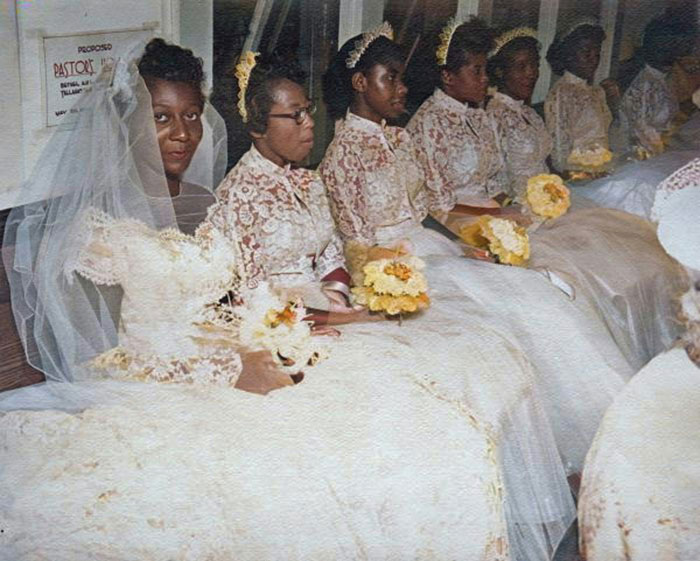
The bridesmaids got to share in the fun, wearing dresses in similar tea-length styles. Pretty pastel colors were incredibly popular, creating a sweet, coordinated look that was the epitome of 1950s charm.
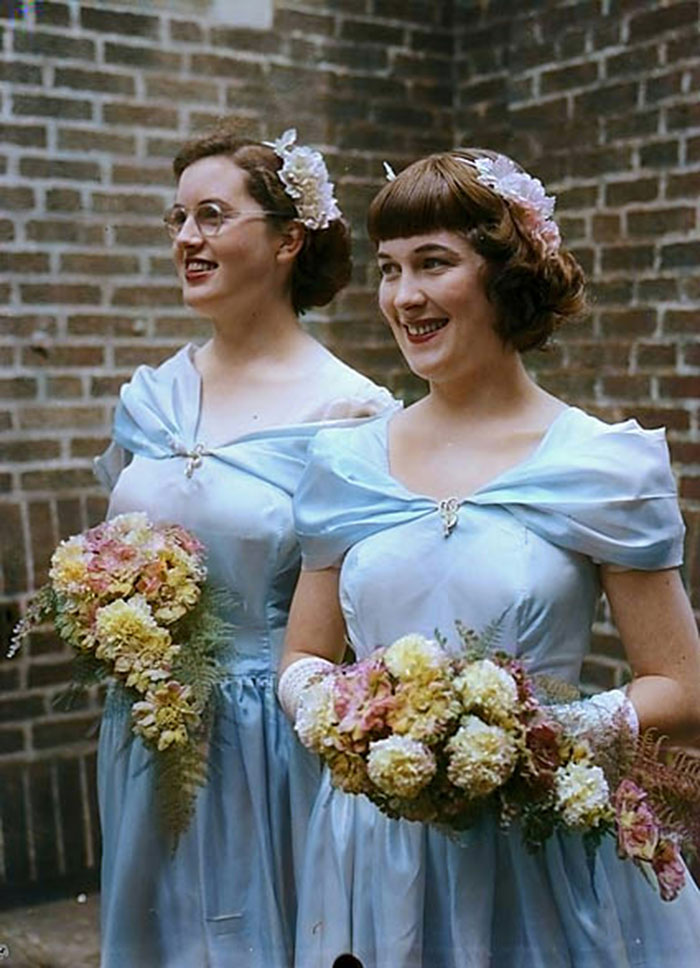
The Hair and Makeup: Classic Glamour
The makeup of the 1950s is timeless. The signature look was polished and glamorous: a medium-to-full coverage matte foundation, set with powder for a flawless finish. Brows were beautifully groomed and arched, but the real focus was on the eyes and lips. A sharp, black cat-eye flick. Created with the newly popular liquid liner, defining the eyes. Lips were perfectly lined and filled in with a vibrant red, coral, or pink lipstick. Hairstyles were equally polished, with soft, perfectly coiffed curls and waves framing the face.
The Vibe: Sock Hops and Sweethearts
When it came to the decor, a 1950s theme seemed to split into two equally delightful paths. The first was a sweet, romantic theme, filled with soft pinks, glittery accents, polka dots, and stripes. I saw inspiration shoots featuring adorable details like bridesmaid corsages and even a strawberry milkshake bar—a fun, retro touch.
The second path was the high-energy Rockabilly or Sock Hop theme. This was all about fun and nostalgia, with a bold color scheme of black, red, and white. The decor would feature checkered tablecloths, cutouts of musical notes and vinyl records. A vintage car for the getaway would be the perfect finishing touch.
The more I read, the more I saw the 1950s vintage wedding as a powerful cultural pendulum swing. During the war, women had taken on traditionally male roles, and fashion had been practical and utilitarian. The post-war era saw a strong societal push for a return to traditional gender roles and the idealized domestic sphere. The fashion of the ’50s wedding perfectly reflects this shift. The exaggeratedly feminine hourglass silhouette was the complete antithesis of the shoulder-padded suits of the 1940s.
Mod Minis and Flower Children – The Swinging Sixties
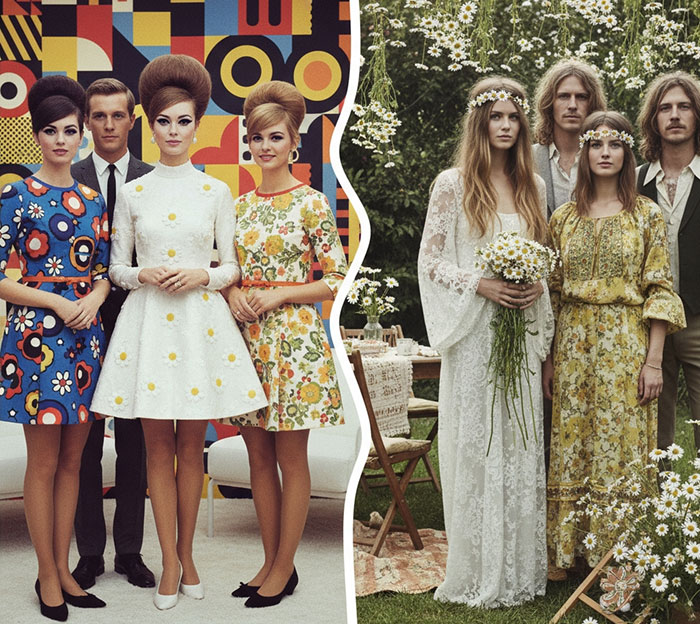
Just as I was getting comfortable in the frothy, feminine world of the 1950s, my research catapulted me into the 1960s. A decade of such dramatic change that it felt like two different eras rolled into one. This was the decade of the generation gap, and wedding fashion was right there on the front lines. It was a tale of two completely different brides.
The Dress: A Tale of Two Silhouettes
The decade began with a clean break from the ’50s. The full, frothy skirts deflated into sleek, sophisticated A-line silhouettes. The waistline crept up to create a high, empire-waist look. This was the Mod era. Influenced by the Space Age and a new, youthful energy, bridal fashion became minimalist and chic. Hemlines rose once again, from tea-length to, for the truly fashion-forward bride, the mini-skirt. I pictured a bride in a simple, structured dress with a high neckline, maybe with some daisy appliqué. She would look effortlessly cool and modern.
But then, as the decade wore on, a counter-culture movement began to bloom. The structured, urban look of the Mod bride gave way to the relaxed, bohemian style of the “flower child”. Dresses became softer, more flowing, and often featured romantic details. Like lace and long sleeves, a direct precursor to the full-blown hippie aesthetic of the ’70s.
The Bridesmaids: Coordinated or Counter-Culture
The bridesmaids followed suit. A Mod bridal party would look sharp in colorful A-line mini dresses, a coordinated and graphic statement.
The Hair and Makeup: Big Hair and Bold Eyes

The 1960s was the decade of BIG hair. The undisputed queen of ’60s hairstyles was the beehive, a towering updo that was a true architectural marvel. I read one tutorial explaining how this look was achieved. Through heroic amounts of backcombing, teasing, and hairspray. Sometimes with a bath loofa or hair rat used as a foundation to achieve the necessary height. An alternative, popularized by Brigitte Bardot, was the half-up bouffant, still voluminous but with a softer, more romantic feel.
The makeup was just as dramatic and iconic. The focus was entirely on the eyes. A matte, pale base was the canvas for a graphic cut-crease eyeshadow look, heavy winged eyeliner. Layers of mascara on both the top and bottom lashes for a wide-eyed, doll-like effect. To keep the focus on the dramatic eyes, lips were kept pale and nude, often with a glossy finish.
The Vibe: Pop Art or Peace and Love
The decor, like the dresses, was a story of two opposing styles. A Mod vintage wedding would be a graphic, pop-art explosion. I imagined a vibrant color palette, geometric patterns, and a clean, minimalist feel. In contrast, a late-’60s “Summer of Love” wedding would be a relaxed, outdoor affair. The decor would be inspired by nature, with daisies being the flower of the moment. A cheerful color scheme of yellow and green, and an overall garden-party atmosphere.
This stark divide in styles made me realize something crucial about the 1960s. For the first time, a bride’s choice of wedding style was a clear and powerful statement about her social and even political identity. The early ’60s Mod look was forward-thinking, urban, and aligned with a modern, consumer-driven culture.
The late ’60s Hippie aesthetic was a direct reaction against that, a rejection of the mainstream in favor of nature, handmade crafts, and anti-establishment values. A bride in a Mod mini-dress and a bride in a flowing “flower child” gown belonged to two different cultural tribes. The wedding dress had become a banner.
Bell Bottoms and Boogie Nights – 1970s
My final stop on this wild, decade-hopping journey was the 1970s. An era that took the individualism of the late ’60s and ran with it in two very different, very groovy directions.
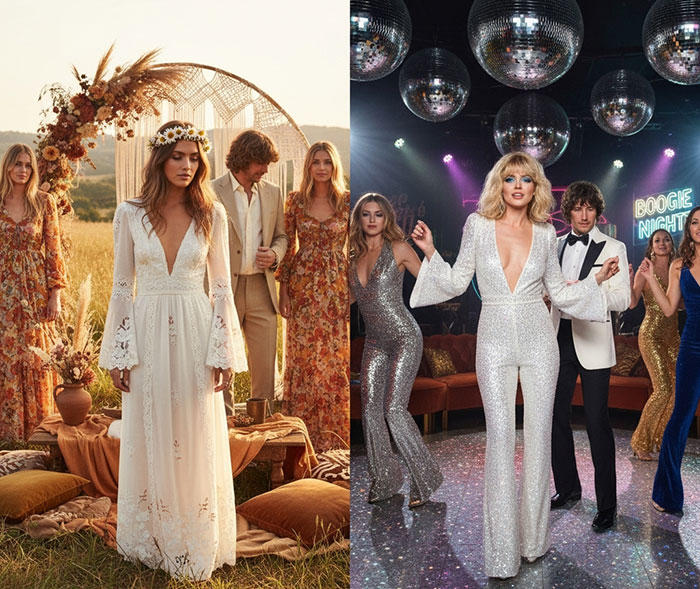
The wedding was no longer just a ceremony; it was a highly personalized event, a showcase of the couple’s unique subculture. And the two dominant subcultures were the free-spirited Bohemian and the glamorous Disco queen.
The Dress: Ethereal Folk or Glittering Glam
First, the Bohemian bride. This look was the evolution of the late-’60s flower child into something more established and folkloric. I fell for the dreamy, free-spirited dresses with their flowing maxi silhouettes and dramatic, billowing bell sleeves. The details were romantic and handmade-inspired: delicate scalloped crochet lace, intricate embroidery, and natural fabrics. The overall vibe was comfortable, natural, and deeply individualistic.
Then, on the complete other end of the spectrum, was the Disco bride. If the Bohemian bride was all about peace and love, the Disco bride was all about the party. This was pure, unadulterated glamour. The ultimate statement was a glittering, all-over sequin jumpsuit with a plunging neckline and wide, bell-bottom legs. An outfit designed to catch the light of a disco ball from every angle.
The Bridesmaids: Flower Children or Dancing Queens
The bridesmaids, naturally, would align with the bride’s chosen tribe. A Bohemian wedding would feature a bridal party in ethereal, flowing floral maxi dresses. A Disco wedding, on the other hand, would call for shimmering, slinky outfits. These were ready to hit the dance floor.

The Hair and Makeup: Natural or Notorious
The beauty looks were just as polarized. The boho bride embraced a natural aesthetic. Hair was worn long, loose, and flowing. Often with a simple center part and crowned with a wreath of fresh flowers like daisies. Makeup was minimal, dewy, and sun-kissed, with a focus on glowing skin and glossy lips.
The disco look was the complete opposite. It was all about high-voltage glamour. The signature hairstyle was the big, bouncy, feathered look made famous by Farrah Fawcett. Makeup was bold and vibrant. Eyes were decorated with shimmering, colorful eyeshadows, skin was luminous and highlighted, and lips were slicked with high-shine gloss.
The Vibe: Rustic Retreat or Studio 54
The decor created a totally immersive experience. A Bohemian wedding would be a rustic, earthy affair, likely held outdoors. The decor would feature macrame arches, dried flowers, velvet accents. And a warm, retro color palette of marigold, cinnamon, and terracotta.
A Disco wedding was a full-on party from start to finish. The decor was defined by one key element: the disco ball. Lots of them. The venue would be transformed into a nightclub. Glittering dance floors, plush velvet lounge furniture for guests to mingle on, and maybe even a custom neon sign.
Looking at these two incredibly distinct themes, it became clear that the 1970s marked the death of the “one-size-fits-all” wedding. The choice between a rustic, bohemian gathering and a glittering disco party? This was the decade that truly paved the way for the hyper-personalized, theme-driven weddings we see today.
And the Winner is – The 1940s
After much deliberation, I have made my decision. And the winner is… the 1940s “Make Do and Mend” theme.
I know, I know. After all that glamour, I chose the decade of rationing. But here’s the thing: while the sparkle of the other eras was tempting, the story of the 1940s captured my heart. In a world obsessed with expensive weddings, the idea of a celebration built on community feels incredibly authentic and meaningful. It’s a theme that focuses on the marriage, not just the party.
But, being me, I’m putting my own little twist on it. We’re not going for a purely historical re-enactment of wartime austerity. Our theme is a “Post-War Victory Party.” We’ll take the beautiful spirit of the ’40s, the simple elegance of a chic bridal suit. And absolutely the Victory Rolls. I’ll blend it with the overwhelming joy and relief that came after the war ended.
It’s the perfect compromise: the heartfelt, make-do-and-mend vibe. But with a full dance floor, plenty of food (no ration books required), and the feeling of a celebration. It’s meaningful, it’s stylish, and it’s a fantastic excuse to throw the party of a lifetime.
Now, if you’ll excuse me, I have to go source some vintage china and teach my bridesmaids how to backcomb their hair into submission. Paul is just thrilled we’re finally discussing the menu.
Clara Hendricks
That’s all ! © Glamourdaze
